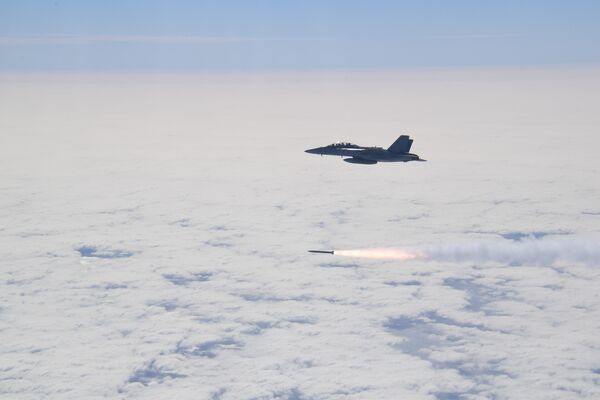
An AARGM-ER air-to-surface missile is launched from a US Navy F/A-18F Super Hornet in the second live-fire test of the weapon system at the US Naval Air Warfare Center Weapons Division, Point Mugu Sea Range, southern California, on 21 January. (US Navy)
The Pentagon's chief weapons tester disclosed that a July 2021 test of the US Navy's new AGM-88G Advanced Anti-Radiation Guided Missile – Extended Range (AARGM-ER) from an F/A-18 Hornet resulted in “unexpected missile behaviour”. This problem has been fixed and the changes validated in a recent test, according to Captain Alex Dutko, the programme manager for Direct and Time Sensitive Strike Program office.
Capt Dutko, along with programme officials from Northrop Grumman, provided reporters with an AARGM-ER update during this year's annual Navy League conference and addressed missile problems disclosed in the “controlled unclassified information” version of the Director, Operational Test and Evaluation (DOT&E) annual report.
In this version of the report, released in January 2022, the office said that during the first developmental free flight test in July 2021, “shortly after missile release, the missile experienced an unexpected pitch up, beyond the predicted angle of attack, that caused it to depart controlled flight for 0.7 seconds”.
“During this short period of lost control, the missile yawed 30 degrees north of the intended path and crossed the path of the F/A-18 launch platform at a distance of slightly less than 300 feet. Modelling and simulation had predicted a crossover distance of 400 feet,” the DOT&E report added.
Once the missile “recovered control”, its behaviour was “consistent” with modelling and simulation predictions. However, the anomaly caused the missile to hit a peak altitude 25% lower than predicted, a peak speed 14% lower than anticipated, and a shorter range than predicted.
Looking to read the full article?
Gain unlimited access to Janes news and more...







